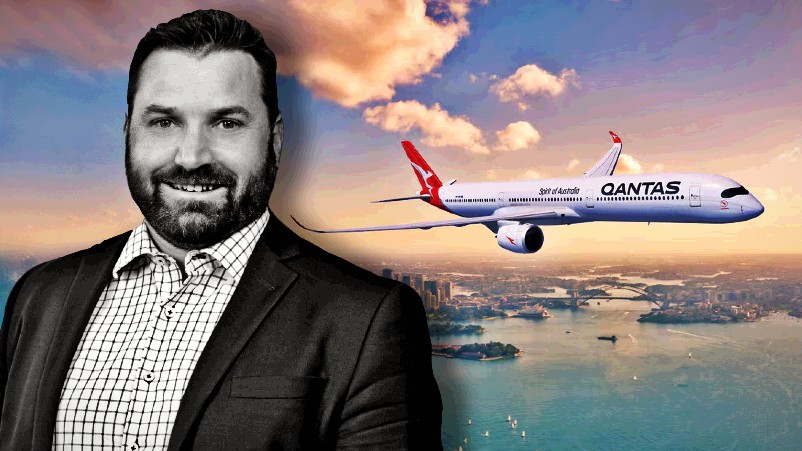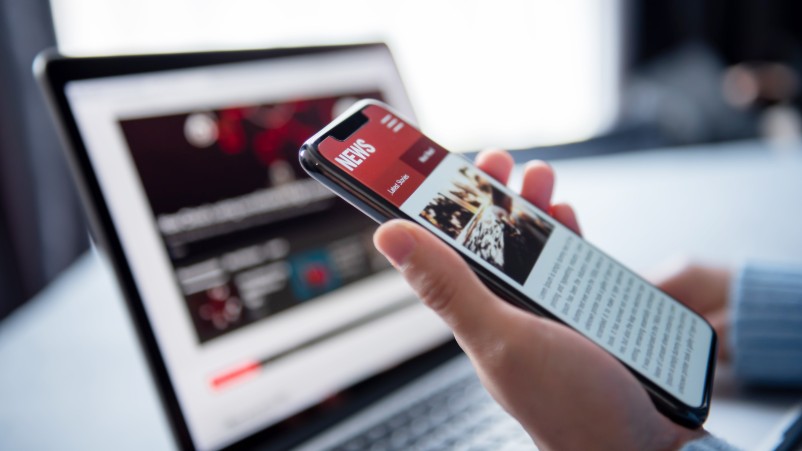Robot chicken: Qantas exec reveals three AI customer experience experiments

Succulent CX: Qantas' Scott Wilkinson says customer experience is a key AI use case.
Qantas' brand has taken a roasting in recent years. But thanks to artificial intelligence, it's no longer serving up dry chicken. Since taking the helm from Alan Joyce, new chief Vanessa Hudson has made customer experience key to the trust rebuild – and AI is playing an increasing role. Scott Wilkinson, executive manager, digital and direct customer experience, outlined three early CX use cases during a panel discussion at SXSW this week: Ticketing; giving customer agents additional firepower; and spotting and solving problems and complaints – e.g. paltry poultry – as they emerge rather than months later.
What you need to know:
- Qantas used AI for years to do things like plan the most fuel-efficient flight paths or extract value from its trove of customer loyalty data.
- But AI forays into customer experience are more nascent.
- Gen AI in particular could present a salve for a company whose brand perception has tanked in recent years due to poor customer experiences, particularly following lockdowns.
- Executive manager, digital and direct customer experience, Scott Wilkinson, outlined three use cases Qantas is investing in; a better ticketing process, better-informed agents, and the chance to compress the time between the identification of customer problems, and their resolution.
- One upshot? No customers spitting feathers over dry chicken.
If you are lucky you might get 2,000 comments a week about food in total, and on a specific route you may even get 20 around... but we're now able to intervene almost immediately and uplift that customer experience.
Cock a doodle don'ts
Qantas has long applied more established forms of artificial intelligence to drive efficiency and better outcomes in its business processes. Now it's investigating a range of use cases, according to executive manager, digital and direct customer experience Scott Wilkinson, some of which seem tailor-made for generative AI in particular.
“We've been toying around with AI for quite a few years now,” he told a SXSW audience in Sydney. “If you think about the operations, we've been using it for a few years to help with our flight planning because there are a multitude of factors that go into picking the most direct route to minimise things like fuel burn.”
AI has likewise played a key role in Qantas’s Loyalty business, which has a huge data repository, he said. Mining that data faster and acting on it smarter delivers better value for members and for the businesses' bottom line.
When it comes to customer experience, he said the airline is very much still at the foundational stage when considering the impact of the large language models that underpin gen AI, as opposed to the more traditional AI approaches. But there's a rebuild underway, and Qantas sees upside.
Qantas was Australia's strongest brand in 2019 per Brand Finance, but like global industry peers it was smacked by the Covid shutdown and fell to 7th by 2022. Then it suffered problems of its own making, mismanaging its response the the reopening of the economy, fending off accusations of profiteering amid nosediving customer service and seemingly gripped by a cultural malaise that culminated in then CEO Alan Joyce blaming his customers for the airline's poor operational performance.
It was a low point not lost on incoming Qantas chief Vanessa Hudson. She addressed the issue in one of her early public statements in the hot seat.
“We know that millions of Australians rely on us and we’ve heard their feedback loud and clear. There’s a lot of work happening to lift our service levels and the early signs are really positive. Our customer satisfaction scores have bounced back strongly since December and we have more service and product improvements in the pipeline," she stated.
Wilkinson told SXSW delegates that Qantas is gaining CX altitude while aiming to avoid turbulence: “We are investing pretty heavily [in customer experience], but we're taking our time getting that right.”
He called out three use cases in particular; the ticketing processes, helping customer service agents; getting deeper insights into customer experience, and responding to them more quickly.
"If I were to think about three use cases that we're using right now, the first one would be the process of ticketing. Just getting a ticket to someone is incredibly complex. You've got multiple airlines that you've got to talk to, and it can be hugely time-consuming," he said.
As well as making that process less painful, Qantas aims to simultaneously enable its people to focus more on service and less on navigating system inefficiencies.
Freer range
“The second use case the airline is currently working on involves helping agents in their conversations with customers," said Wilkinson. “It’s no secret, we've had to train a lot of agents over the last few years, and we learned a lot through that.”
Call centre workforces can be fairly transient, but Qantas also has a lot of long-term employees with deep organisational history and practice knowledge, according to Wilkinson.
“So how do you try and bridge that gap, to make sure that a customer's getting a really good experience, whether they're talking to an agent that's been with us for a couple of months, versus being with us for in some cases, 30 to 40 years.”
The impression he left is that generative AI is being considered as a way to simplify access to historical knowledge and Qantas' systems to help the company’s agents get better answers faster and to help determine the next best actions that stem from the conversation.
“Finally, and probably the one I'm the most excited about is the way that we're using it to generate insights to directly impact the customer experience,” he said.
“We get a lot of feedback from our customers, and we've started to run it through a lot of the models, and we're able to get some pretty tangible insights out of it fairly quickly and easily.”
Dry chickens
Wilkinson gave the example of a recent new menu launch, and what could be learned from feedback.
“We uploaded all the feedback, and we found out that in Asia and New Zealand, the feedback on the chicken wasn't any good. It was dry. I jumped on the plane and ordered the chicken the next day, and sure enough, it was really dry.”
But he said it’s a great example of a use case (for AI, not in-flight dining): “You ask it a question, bring something back, and what we actually are able to tangibly do with that was to intervene, change the menu, and adapt off the back of that.”
In most cases, he said Qantas would struggle to get enough customer responses in a week about food in general to be able to make confident decisions.
“If you are lucky you might get 2,000 comments a week about food in total, and on a specific route you may even get around 20.”
At that rate it would take months to uncover problems by which stage the menu would likely have changed.
“But we're able to intervene almost immediately and uplift that customer experience.”
Fluffy matters
Qantas’s desire to better discern more precise user intent quickly and act on it is now widely observable across industries as customer-experience platform majors start to roll out generative AI capability at scale.
Hilton is another firm notching some early successes. Like Qantas, the hotel group uses Qualtrics' CX platform, although it's not known if Qantas is using the platform for its early gen AI forays.
According to Becky Polebaum, Vice President, Enterprise & Customer Analytics at Hilton, the company collects and synthesises feedback across the entire guest journey for its more than 7,600 global properties.
She likewise had an anecdote similar to Wilkinson’s. Rather than dry chickens, it was the drying capacity or otherwise of its towels that drew the customers’ ire.
It's the small things that add-up. Spotting them and fixing them fast and systemically shows customers they actually are at the centre of the business, versus telling them they are.

